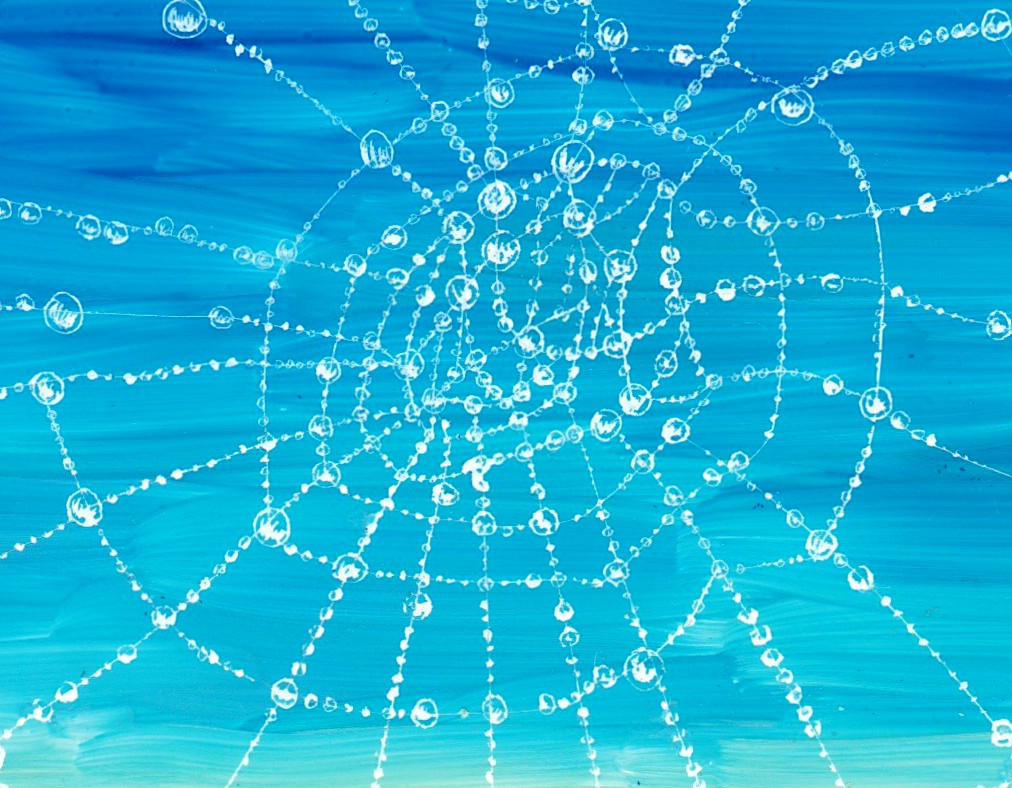Is the spiral of an orb web a golden spiral? 
This question was posed by a student in a class I taught for the Harvard Museum of Natural History on how to draw spider webs. The golden spiral grows logarithmically according to the golden ratio, a ratio reputed to be exceptionally beautiful and prevalent in nature.
I haven’t seen a mathematical analysis of orb web spirals (if you know about one, please tell me!), but at the time I reasoned that they wouldn’t be any kind of logarithmic spiral, golden or otherwise, because such spirals grow wider with every turn. This growth feature is essential in the biological roles where we often see spirals. In shells, for example, the animal inside is growing and wants more room in its shell over time.
But a spider builds a spiral net with the intent to trap flying prey and definitely doesn’t want the gaps in its net to get bigger. Logically, it should be aiming to build an Archimedean spiral, which stays the same width throughout.
Was I right? There was a way to find out: measure the webs of the gray barn orb weavers (Araneus cavaticus) that decorate my house.
Last summer, armed with a ruler, I wandered around my deck looking for webs. I intended to measure each successive gap between turns of the capture spiral along two different radials, ideally on as many webs as I could find. I quickly discovered that my apparently simple experimental design was fraught with challenges.
Most of the webs I found were quite small (perhaps six inches across) with narrow spiral gaps that were close to the measurement limits of my ruler (the finest marks were millimeters). I selected the largest web – a little over a foot in diameter – that I was able to reach. Holding a ruler up to a nearly invisible sticky thread and then accurately measuring it is easier said than done. The slightest unsteadiness of my hands made the ruler waver, creating uncertainty in the number I was reading and threatening to alter the web itself in the process of data collection. I regrouped and upgraded my measurement tool to calipers.
The calipers weren’t a whole lot easier to use, but I did get two columns of accurate-ish data that I could plug into Excel and do some number crunching.
I settled on graphing the distance from center versus the rotation. If the spiral was logarithmic, I would see an exponential trendline, if it was Archimedean, as I expected, I should see a linear trendline.
Despite my challenges with data collection, both data sets from the large web showed clean, linear behavior that tightly matched their trendlines, with R2 values of 0.9976 and 0.9865 – R2 values close to 1 indicate that the chosen trendline is the correct mathematical pattern to apply to these data.
So, the single A. cavaticus web that I measured at my house in Vermont does have an Archimedean capture spiral, as predicted. This spider was quite good at keeping the gaps of its capture spiral very regular, but…
New questions abound: Are all barn orb weavers so regular in their web building? Does it vary with the age of the spider? What about other orb weaving species? Does the web location or other environmental circumstances affect the shape and regularity of the capture spiral? Is there an easier way to measure webs??
Stay tuned…
![]()
